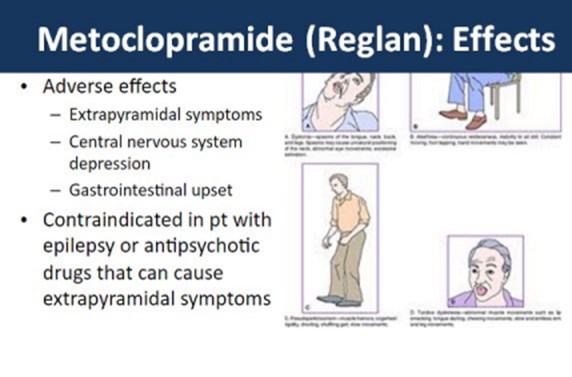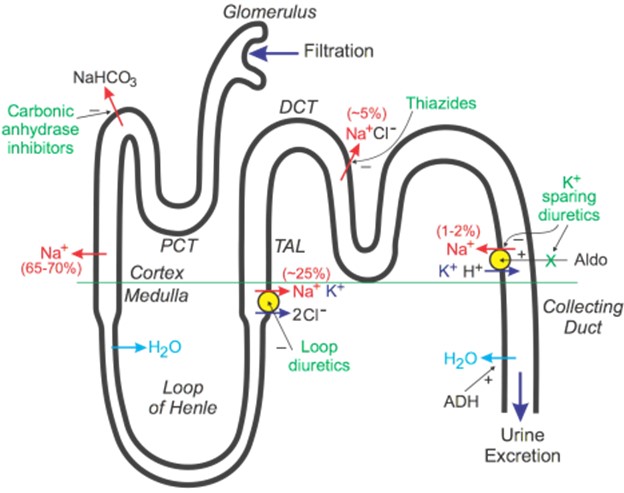A nurse is caring for a client who has gastroesophageal disease and a prescription for metoclopramide. For which of the following adverse effects should the monitor?
Sedation
Hypertension
Urinary retention
Blurred vision
The Correct Answer is A
Metoclopramide is a medication commonly used to treat gastrointestinal disorders such as gastroesophageal reflux disease (GERD). While it is generally well-tolerated, it can have some adverse effects. Sedation is one of the common side effects of metoclopramide. It can cause drowsiness, dizziness, and a feeling of tiredness in some individuals. Therefore, the nurse should monitor the client for any signs of sedation or excessive drowsiness, especially when the client starts taking the medication or when the dose is increased.

Hypertension: Metoclopramide is not known to cause hypertension (high blood pressure) as a common side effect. In fact, it may have a mild hypotensive (blood pressure-lowering) effect in some individuals.
Urinary retention: Metoclopramide does not typically cause urinary retention. Instead, it can enhance gastrointestinal motility and increase the frequency of bowel movements.
Blurred vision: While visual disturbances are rare adverse effects of metoclopramide, blurred vision is not a commonly reported side effect. However, other visual disturbances like oculogyric crisis (involuntary rolling back of the eyes) have been reported in rare cases. Nevertheless, monitoring for blurred vision specifically is not a priority when administering metoclopramide.
Nursing Test Bank
Naxlex Comprehensive Predictor Exams
Related Questions
Correct Answer is C
Explanation
The left Sims' position (also known as the left lateral position) is the appropriate position for administering a soapsuds enema. This position allows for better visualization and access to the rectum and facilitates the flow of the enema solution.
The other options mentioned are incorrect:
Inserting the tubing about 15 cm (6 in) into the anus: The specific depth of insertion may vary depending on the client, but the general guideline is to insert the tubing about 3 to 4 inches into the rectum for an adult. 15 cm (6 in) would be excessively deep and could cause discomfort or injury.
Hanging the enema container 61 cm (24 in) above the anus: The height at which the enema container is hung should be no more than 18-24 inches (45-60 cm) above the anus. Hanging it too high can cause excessive pressure and discomfort during the administration.
Putting on sterile gloves: Sterile gloves are not typically required for the administration of a soapsuds enema. Clean gloves or non-sterile gloves are generally sufficient for this procedure.
Correct Answer is D
Explanation
Furosemide is a loop diuretic that helps the body get rid of excess fluid by increasing urine output. However, it also promotes the loss of potassium in the urine, leading to a potential decrease in the body's potassium levels.

Whether you are a student looking to ace your exams or a practicing nurse seeking to enhance your expertise , our nursing education contents will empower you with the confidence and competence to make a difference in the lives of patients and become a respected leader in the healthcare field.
Visit Naxlex, invest in your future and unlock endless possibilities with our unparalleled nursing education contents today
Report Wrong Answer on the Current Question
Do you disagree with the answer? If yes, what is your expected answer? Explain.
Kindly be descriptive with the issue you are facing.
